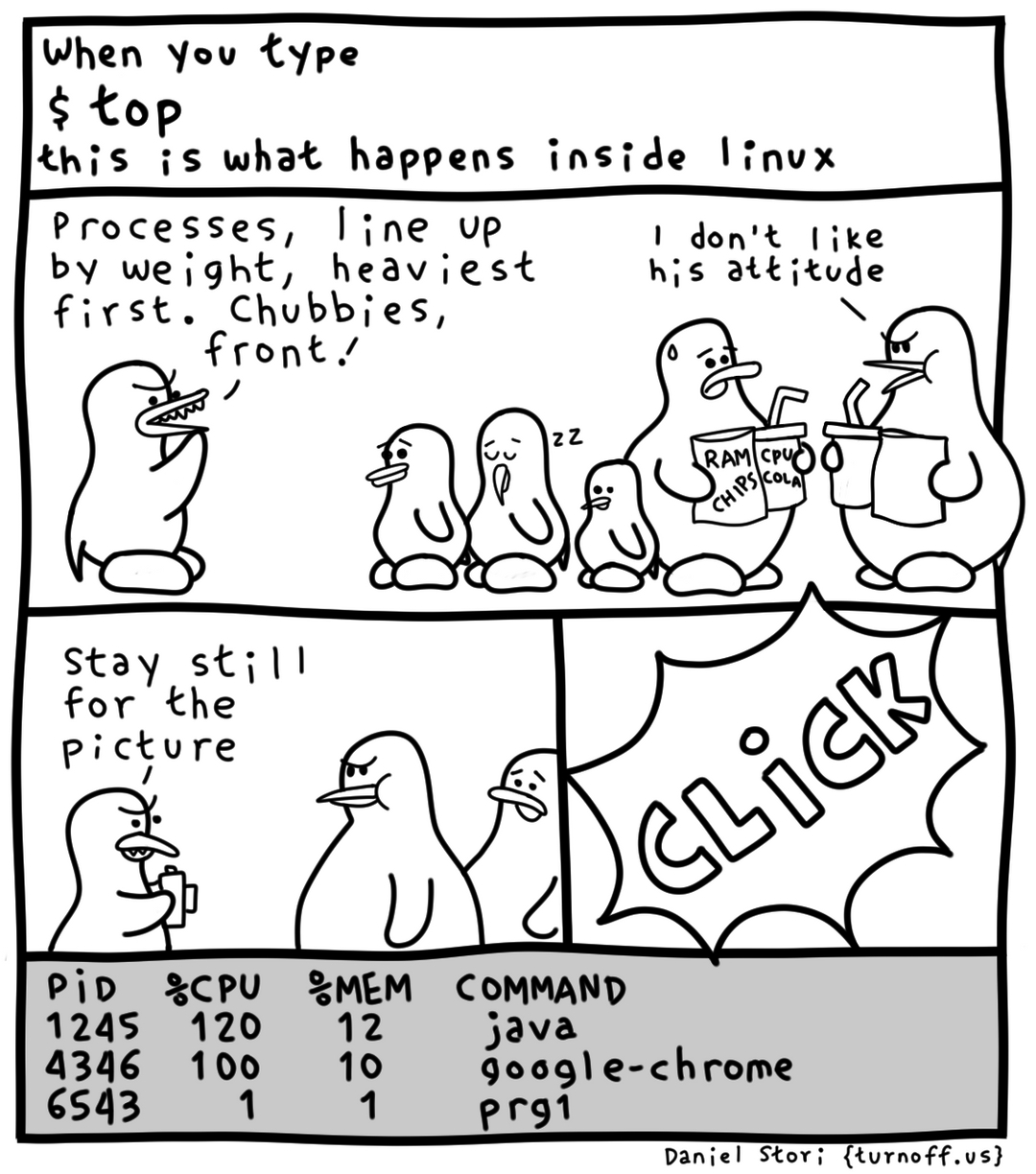this post was submitted on 16 Feb 2024
995 points (99.3% liked)
linuxmemes
20880 readers
9 users here now
I use Arch btw
Sister communities:
- LemmyMemes: Memes
- LemmyShitpost: Anything and everything goes.
- RISA: Star Trek memes and shitposts
Community rules
- Follow the site-wide rules and code of conduct
- Be civil
- Post Linux-related content
- No recent reposts
Please report posts and comments that break these rules!
founded 1 year ago
MODERATORS
you are viewing a single comment's thread
view the rest of the comments
view the rest of the comments

Well behaving programs give control back to the kernel as soon as they are done with what they are doing. If they don't the control is forcefully taken away after some assigned time.
It looks something like this:
Something happens – e.g. a key is pressed – a process waiting for this event is woken up and gets e.g. 100ms to do it stuff. If it can handle the key press in 50ms, kernel notes it used 50 ms of CPU time and can give control to another process waiting for an event or busy with other work. If the key press triggered long computation the process won't be done in 100ms, the kernel notes it used 100ms of CPU time and gives control to other processes with pending events or busy with other work.
After one second the kernel may have noted:
Process A: used 50ms, then nothing, then 100ms, another 100ms and another 100ms
Process B: was constantly busy doing something, so it got allocated 6 * 100ms in that one second
Process C: just got one event and handled it in 50ms
Process D: was not waken at all
So total of 1000ms was used – the CPU was 100% busy
Of that 60% was process B, 35% process A and 5% process C.
And then that information is read from the kernel by top and displayed.
Interrupts. CPU has means triggering and interrupt at a specific time. Interrupt means that CPU stops what it is doing and runs selected piece of kernel code. This piece of kernel code can save the current state of user process execution and do something else or restore saved execution of another process.